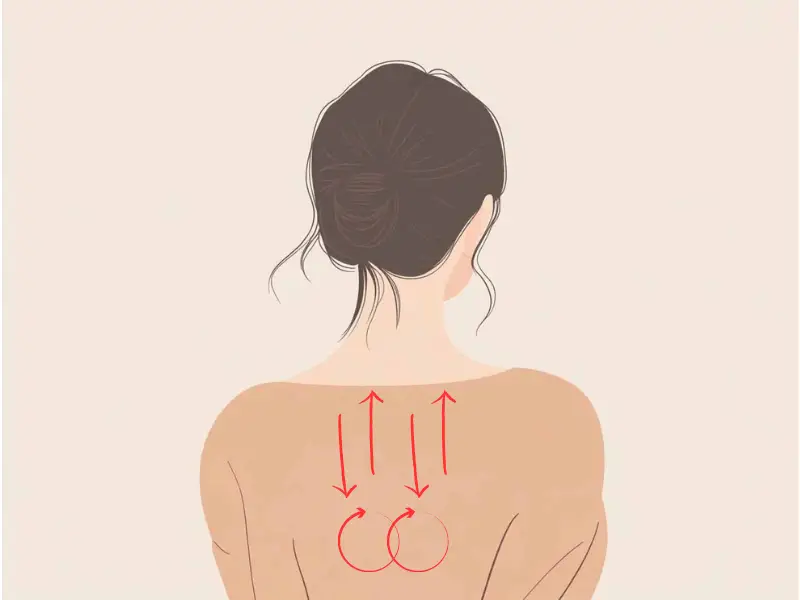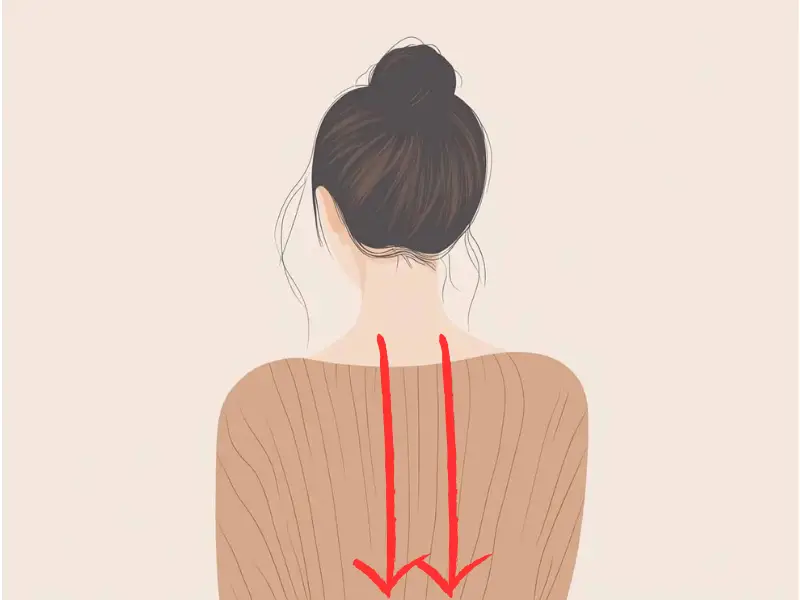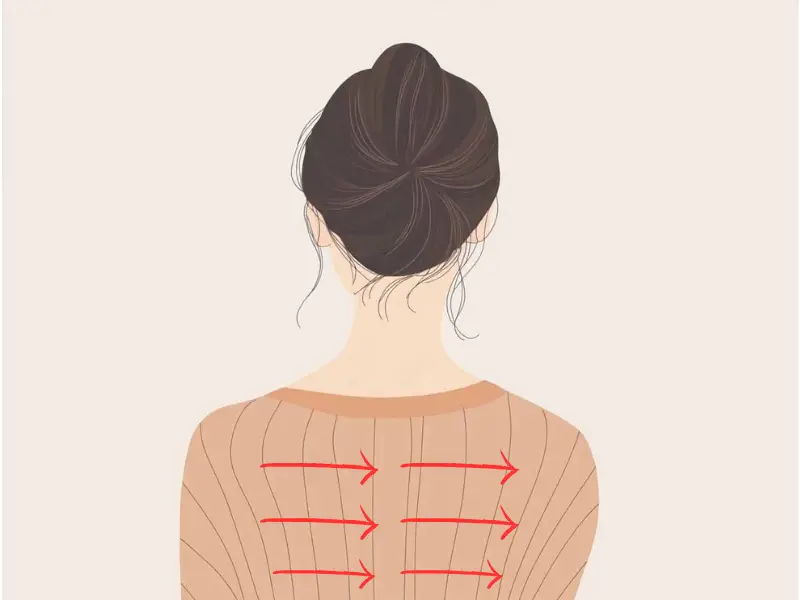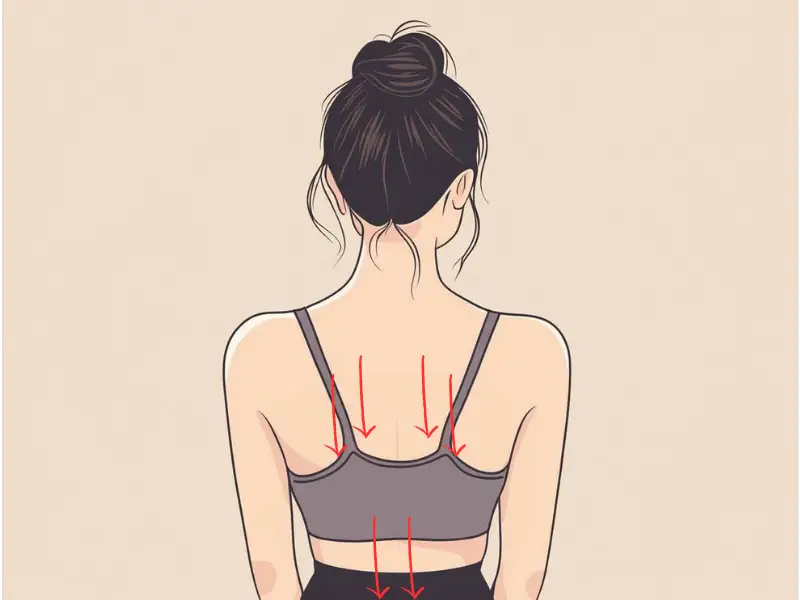Gua Sha is a popular Traditional Chinese Medicine (TCM) technique known for its therapeutic benefits. When used on the back, Gua Sha can significantly alleviate chronic pain, reduce muscle tension, and promote healing. If you’re interested in a deeper understanding of how to use this tool, check out our Gua Sha basic guide. In this article, we’ll explore five key benefits of using Gua Sha for chronic back pain, as well as the best techniques to enhance your results.
1. Promotes Blood Circulation in the Back
One of the primary benefits of Gua Sha is its ability to enhance blood circulation. By scraping the skin in smooth, deliberate strokes, Gua Sha stimulates the flow of fresh blood to the area being treated. This increased blood flow helps bring essential nutrients and oxygen to muscle tissues and removes metabolic waste products.
Why This Matters for Chronic Pain Relief:
- Improved blood flow can accelerate muscle repair and reduce inflammation.
- It aids in loosening tight muscles, which are often the source of chronic back pain.
- Regular Gua Sha sessions can improve overall circulation, reducing the severity of flare-ups.
To maximize this benefit, use Gua Sha tools with medium to firm pressure along the paraspinal muscles (the muscles running parallel to the spine) and focus on areas that feel particularly tense.
“Gua Sha can be effective on any part of the body. For the body, areas such as the neck, shoulders, and lower back, where muscles are particularly stiff and tense, are likely to show the most noticeable effects.” — Ms. Mai Sogawa, Senior TCM Therapist.
2. Releases Muscle Tension and Knots
Muscle knots, also known as “trigger points,” are common contributors to chronic back pain. Gua Sha is highly effective at breaking down these adhesions and knots through repeated scraping motions. The pressure applied helps stretch the muscle fibers, releasing tension and restoring flexibility.
Stroke Instructions for Targeting Muscle Knots:
- Locate the Knots: First, identify the areas of muscle tension or knots by feeling along your back, focusing on spots that feel hard or tender.
- Short, Focused Strokes: Apply short, concentrated strokes directly over the tight spots using the Gua Sha tool at a 30-45 degree angle to the skin. Move in a linear motion (back-and-forth or up-and-down) to work deeply into the knot.
- Gradual Increase in Pressure: Start with gentle pressure, then gradually increase until you feel the muscle fibers begin to relax.
- Circular Strokes for Small Knots: If the knot is small and localized, use small circular strokes to penetrate deeper layers.

Consistent Gua Sha practice on your back can alleviate long-standing muscle stiffness and provide lasting pain relief, especially in the upper and lower back regions.
3. Reduces Inflammation in Soft Tissues
Chronic back pain is often linked to underlying inflammation in muscles and connective tissues. Gua Sha is known to reduce inflammation by promoting the microcirculation of blood in the treated area. The gentle scraping motion encourages the release of anti-inflammatory molecules, which help reduce swelling and tenderness.
Ideal Techniques for Inflammation Relief:
- Use gentle, long strokes in a downward motion to stimulate lymphatic drainage.
- Focus on broad areas of the back where swelling or tenderness is felt.
- Avoid aggressive pressure that can cause further irritation.
Incorporating these techniques into your self-care routine can make a significant difference in managing pain related to inflamed tissues.
4. Stimulates the Body’s Natural Healing Response
Gua Sha isn’t just about immediate relief; it also triggers the body’s innate healing processes. The microtrauma caused by the scraping encourages the production of new capillaries and an increased flow of healing enzymes. This reaction enhances the body’s ability to repair itself, making it a powerful tool for long-term pain management.
How to Optimize Healing with Gua Sha:
- Use sweeping strokes in one direction over the affected areas.
- Keep sessions short (5–10 minutes) to prevent overstimulation.
- Focus on areas with visible redness (petechiae), as these are signs of the body’s healing response being activated.
With regular practice, Gua Sha can help maintain back health and minimize the recurrence of chronic pain.
5. Enhances Flexibility and Range of Motion
Chronic back pain can limit your ability to move freely, affecting daily activities and overall quality of life. Gua Sha addresses this issue by loosening tight fascia—the connective tissue surrounding muscles—improving your range of motion and flexibility. It’s particularly effective for the upper back and shoulder region, where tightness often restricts mobility.
Stroke Instructions for Improving Flexibility:
- Large, Sweeping Strokes: Use large sweeping strokes, starting from the base of the neck, moving down to the lower back. Hold the tool at a 30-degree angle and move it in long, continuous strokes.

- Cross-Fiber Strokes: To target stiffness, use cross-fiber strokes (perpendicular to muscle fibers) on tense areas like the upper trapezius and shoulder blade region.

- Gentle Pressure with Broader Tools: Use a larger, flat-edged Gua Sha tool with lighter pressure to cover broad muscle groups, like the lower back and shoulder blades.

- Add Stretching: Follow up with gentle stretching exercises to complement the Gua Sha technique and enhance flexibility.
“For the back, although it can be challenging to do on yourself, focusing on the muscles along the spine and around the shoulder blades can be effective.” — Ms. Mai Sogawa, Senior TCM Therapist.
Over time, this technique can lead to better posture, reduced stiffness, and a greater range of motion, making it an excellent addition to any chronic pain management routine.
By incorporating Gua Sha into your back care regimen, you can experience these five key benefits and enjoy a more pain-free, flexible back. Make sure to start slowly, adjust the pressure based on your comfort level, and consult a healthcare professional if you’re dealing with severe or persistent pain.

Try our Anti-Aging Gua Sha Tool designed to bring out your skin’s natural glow.
Best Gua Sha Product- Anti-Aging: The tool is designed to target 11 specific aging signs such as wrinkles and sagging skin. By following the 7-step routine, users can improve skin firmness and reduce fine lines naturally.
- Enhances Skincare Routine: It works effectively with serums and lotions, boosting absorption and efficacy of skincare products.
- Visible Skin Improvement: Users can expect a smoother complexion, reduced puffiness, and a more youthful appearance.
 P. Sze
P. Sze 
















